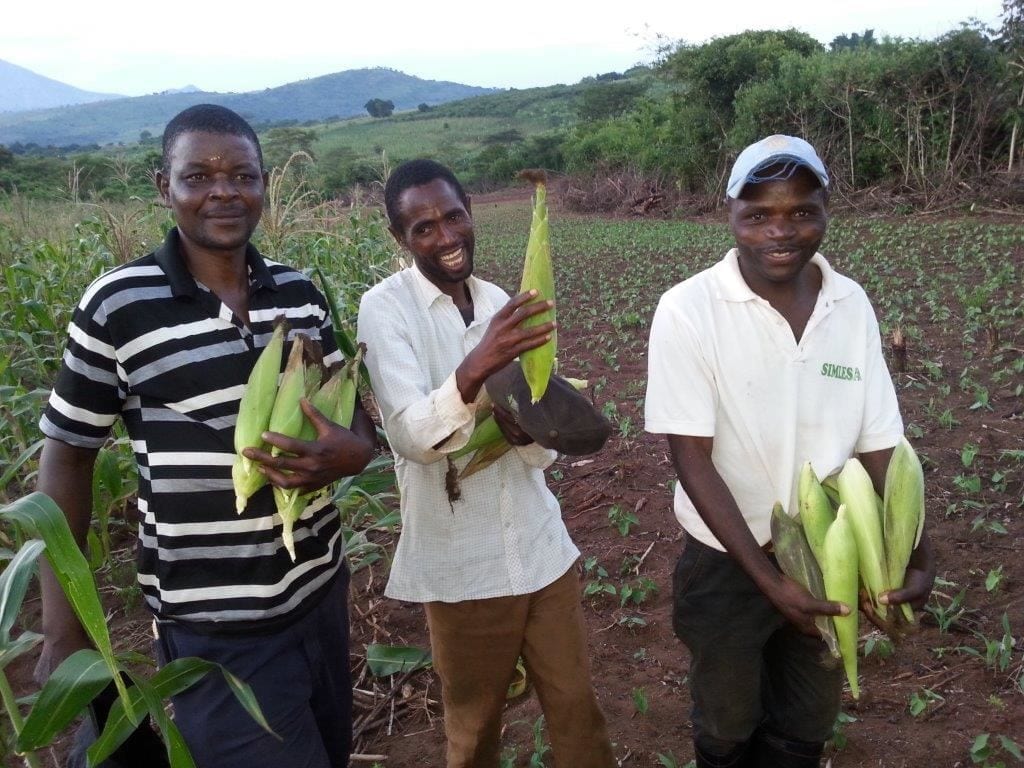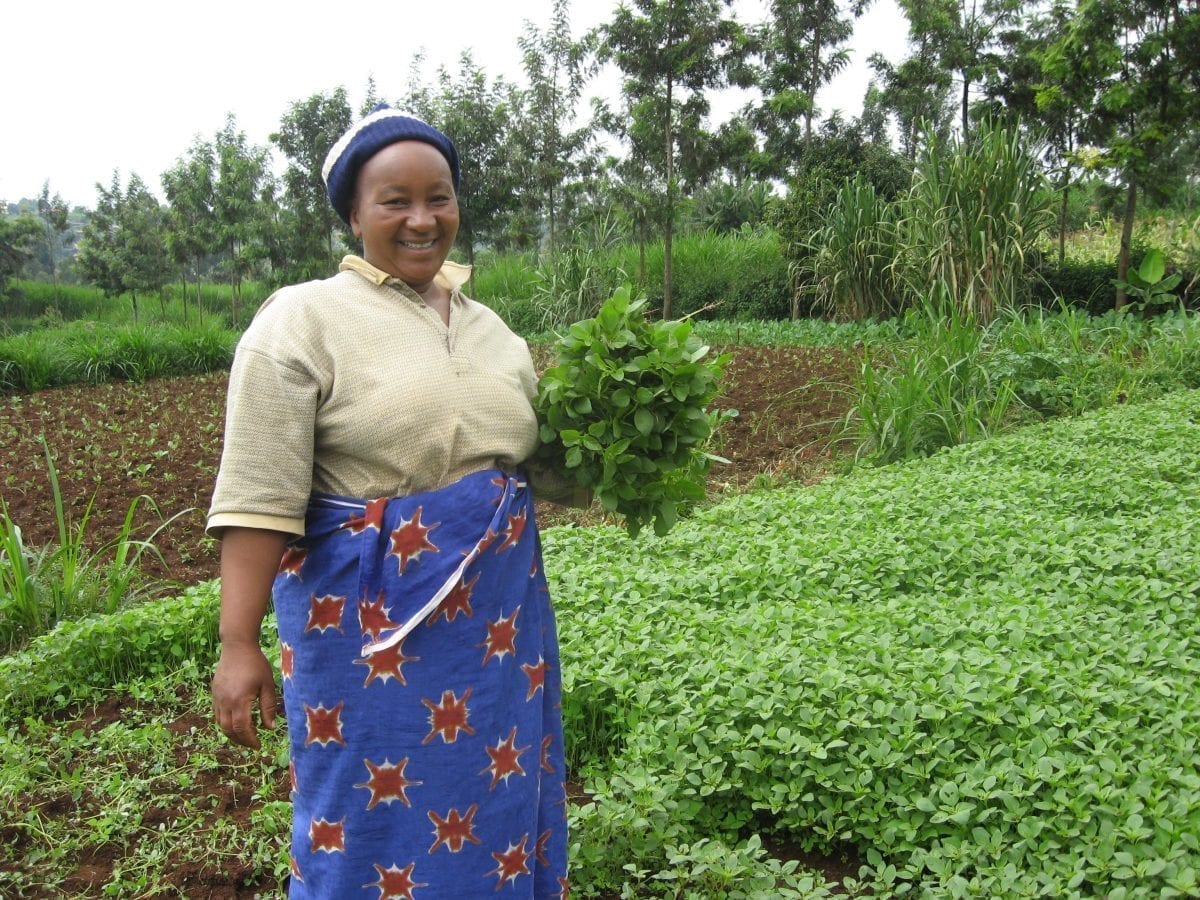Optimizing Fertilizer Recommendations in Africa (OFRA)
Soil fertility across much of sub-Saharan Africa is poor, which is a major constraint to improving farm productivity and farmer livelihoods. To combat this there is now wide recognition of the need to integrate increased fertilizer use with other aspects of soil fertility management. This project aims to contribute to improved efficiency and profitability of fertilizer use within the context of Integrated Soil Fertility Management (ISFM) practices.
Ethiopia
Ghana
Kenya
Malawi
Mali
Mozambique
Niger
Nigeria
Rwanda
Tanzania
Uganda
Zambia
Project Overview
So, what’s the problem
Soil fertility across much of sub-Saharan Africa is poor, which is a major constraint to improving farm productivity and farmer livelihoods. To combat this there is now wide recognition of the need to integrate increased fertilizer use with other aspects of soil fertility management.
Known as ‘Integrated Soil Fertility Management (ISFM)’, it combines the use of mineral fertilizers and locally available soil amendments and organic matter to replenish lost nutrients. These practices improve soil quality and the efficiency of fertilizers and other agro-inputs.
Any decisions on fertilizer use need to consider a farmers’ financial and environmental situation along with the cropping system in question in order to maximize profitability; especially smallholder farmers who are financially constrained. The best combination of crop-nutrient-rate are vital.
What is this project doing?
To feed people, we must first feed the soil.
This project aimed to contribute to improved efficiency and profitability of fertilizer use within the context of ISFM practices.
We worked in partnership with the University of Nebraska, Lincoln and national agricultural research and extension systems in 13 countries in sub-Saharan Africa.
We captured, shared and managed data from both past and ongoing research trials in a common database. This is being used to develop fertilizer recommendations.
OFRA also worked in partnership with the African Soil Information Service (AfSIS) to use the available soil spatial information, such as digital soil maps, so we can select appropriate sites for field trials and extend the field information to agro-ecological zones with similar soil characteristics.
Ultimately the team from CABI and partners worked together to develop different tools and methods to promote crop and site specific fertilizer recommendations.
The main cropping systems varied between countries and within agro-ecological zones. They were selected from: maize, sorghum, pearl millet, finger millet, teff, rice, bean, groundnut, soybean, pigeon pea, chick pea and cowpea.
We hope to improve the use of research data to support fertilizer recommendations, and increase the use of spatial information which can then be extrapolated to aid the development of decision tools for farmers.
The project worked to improve the relevance of fertilizer recommendations in an ISFM framework for stakeholders, and improve access to information and communication materials for extension workers.
The communication aspects of this project were undertaken by the CABI-led ASHC project which packages information and knowledge emerging from project experience for diverse audiences including, smallholder farmers, extension workers and policy makers.
See a video about the problems of soil fertility and what we intend to do.
Results
With our partners, we developed different tools and methods to promote crop and site-specific fertiliser recommendations for 13 countries including an online database which includes almost 8,000 entries of legacy data and 6060 entries of OFRA field trial data from 13 countries.
From this data, 5,275 crop response functions have been developed, and the data from Uganda has been used to develop practical decision support tools including a fertilizer optimization tool (or FOT). This computer-based tool advises farmers on how much fertilizer to use to maximize their profits, and is tailored to their local conditions. In total, 74 crop- and location-specific FOTs have been developed for 67 agro-ecological zones. To aid outreach and increase use, over 1000 researchers (from universities, development organizations, research organizations and NARES) and more than 3,400 extension workers and Community Knowledge Workers (or CKWs) in 13 countries have been trained on its use
More than 10 scientists have been trained to use their own data to develop similar tools suitable for different agro-ecological zones in their countries.
Working with Grameen foundation, an FOT mobile app has been prepared, and the project team have developed a paper-based FOT in Uganda.
To increase awareness and communicate the FOT to a diverse audience, a wide-range of communication channels were used and materials developed, including: 7,000 pieces of collateral such as flyers and manuals, papers were published, even a book, and 16 conferences have been presented at.
In the future we aim to:
- adapt the paper-based FOT and the mobile and app for other countries
- undertake a follow-up study to assess the ease of use, applicability of the tool by the extension workers and the CKWs
- complete field trials and develop an FOT for the remaining countries
- write a technical handbook on guidelines for developing fertilizer recommendations
We also want to develop appropriate communication materials for both field practitioners and farmers. These will be developed in a participatory way in order to build the capacity of partners and local stakeholders through the process.
See a video we’ve produced on the tool.
Partners
Africa Soil Information Services (AfSIS)
National Agricultural Research and Extension Systems of the 13 countries
University of Nebraska, Lincoln


